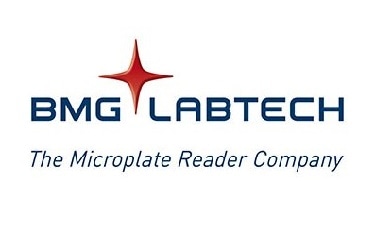The measurement of adenosine 5’-triphosphate (ATP) is commonly used for determining the amount of microorganisms in food. It can also be used for quantifying the number of cells in serum and tissues. The Promega ENLITEN® kit, used for detecting ATP, uses luciferase/luciferin (L/L) to quickly quantify ATP. L/L catalyzes the light-generating reaction of ATP at 560 nm, with ATP being the limiting agent.
ATP + D-Luciferin + O2 → Oxyluciferin + AMP + Pyrophosphate + CO2 + Light
This experiment aims to determine the analytical limit of detection (LOD). The Promega kit can detect ATP down to 10-16 mol (0.1 fmol). More information is available at www.promega.com.
Materials and Methods
All the materials were obtained from the manufacturers as stated.
Promega ENLITEN® kit, Distilled water, BMG LABTECH microplate reader with injectors, Microplates (White 96 well, Costar)
Consumables such as pipette tips and micro-centrifuge tubes were used as needed.
Experimental
All the assays and reagents were prepared according to Promega’s protocol. It is crucial to ensure there is no contamination of the samples as ATP is commonly found in almost everything. Using serial dilutions ranging from 1000 fmol/well to 0.1 amol/well, ATP solution was pipetted onto the plate. Before measurement, 100 µL L/L solution was injected into each well using the built-in reagent injector of the microplate reader. The injector was cleaned with a 10% bleach solution by allowing it to sit in the injector and tubing for 30 min prior to use. Then, the tubing was thoroughly rinsed with distilled water to remove the bleach solution.
The plates were read in the luminescence mode after inserting them into the instruments using the following parameters:
BMG LABTECH reader parameters:
| . |
. |
| Emission filter: |
Empty (depending on reader) |
| Read Mode: |
Well |
| Gain: |
3300–3500 (depending on model) |
| No. of intervals: |
20 |
| Integration time: |
0.5 s |
| Position delay: |
1 s |
A plot of the difference between the average of the duplicate measurements at each concentration and the average of the blank measurement was made. A linear regression on the standard curve provided the values shown in Fig. 1 and 2.
.jpg)
Figure 1. Linearity data from 100 fmol/well to 0.195 fmol/well.
.jpg)
Figure 2. Expanded range from Figure 1, 0-30 fmol/well.
Results and Discussion
The ATP kit showed a linear performance from 100 fmol/well to 0.195 fmol/well. A linear regression on the data gave an R2 value of 0.99859. Twenty blank samples were measured to obtain a standard deviation of 138 RLUs for a well measurement. Using these parameters, the LOD, LOQ, and R2 were calculated (Table 1).
| Parameter |
FLUOstar® |
LUMIstar® |
| R2 |
0.99589 |
0.99895 |
| LOD |
0.81 fmol/well |
0.20 fmol/well |
| LOQ |
2.70 fmol/well |
0.67 fmol/well |
The resource manual that comes with the kit states it is capable of measuring ATP from 10-11 to 10-16 mol. The calculated data shows that the BMG LABTECH microplate reader can not only perform within this range but can also go down to much lower detection limits, beyond the linearity of the Promega ENLITEN® ATP kit. The LOD for ATP using this kit is about 1 fmol/well for the FLUOstar/POLARstar instrument series. This is quite reasonable and in the range of general laboratory use.
Since the results were obtained from only one instrument, they should be taken only as representative and do not reflect the reader as a whole. However, they give a reasonable estimate of the performance and the results may or may not vary among different instruments.

This information has been sourced, reviewed and adapted from materials provided by BMG LABTECH Ltd.
For more information on this source, please visit BMG LABTECH Ltd.